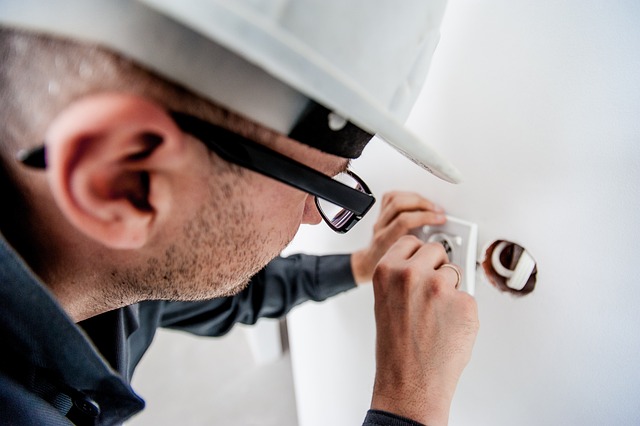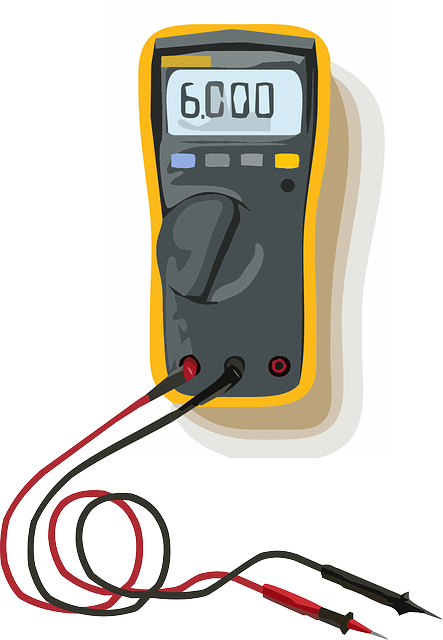Certified electricians conduct thorough inspections of a building's electrical systems during safety assessments, ensuring adherence to the latest electrical standards. Their role is critical in identifying and addressing potential risks such as fires, electric shocks, and power outages by checking wiring, circuit breakers, outlets, and lighting fixtures for proper grounding, overcurrent protection, and correct installation. A key aspect of their work is installing safety devices like Ground Fault Circuit Interrupters (GFCI) in areas prone to moisture to prevent electrocution. These professionals are essential for issuing certificates of compliance, which are necessary for occupancy permits and the ongoing safety of building residents. They also uphold electrical compliance with the National Electrical Code (NEC), a set of safety standards developed by the National Fire Protection Association (NFPA) and updated every three years to include new technologies and safety measures. By meticulously applying these codes, electricians ensure that electrical systems function safely and effectively in homes, workplaces, and industrial settings, thereby protecting public safety and safeguarding assets from potential electrical hazards.
When it comes to safeguarding our buildings from potential hazards, the role of an electrician extends beyond mere circuit installation and repair. A critical aspect of their responsibility is ensuring that structures adhere to electrical codes for both safety and compliance. This article delves into the meticulous process of building inspections, highlighting the essential checks electricians perform to maintain code compliance and identify risks. We will explore how modern technology has revolutionized these inspection methods, enhancing the precision and efficiency of ensuring electrical safety. From the foundational principles of the National Electrical Codes (NEC) to the advanced tools employed by today’s electricians, this article sheds light on the integration of technology in building inspections, setting the stage for a deeper understanding of the collaboration between professionals and the future trends shaping this vital industry.
- Ensuring Electrical Safety and Code Compliance in Building Inspections
- – Overview of National Electrical Codes (NEC)
Ensuring Electrical Safety and Code Compliance in Building Inspections

During building inspections, a key focus is ensuring electrical safety and adherence to relevant codes. Certified electricians play a pivotal role in this process by assessing all aspects of the electrical systems within structures. They meticulously examine wiring, circuit breakers, outlets, and lighting fixtures to verify that they are up to par with the latest electrical codes. These codes are designed to protect both the building’s occupants and the integrity of the structure itself by minimizing risks such as fires, electric shocks, and power interruptions. Electricians check for proper grounding, adequate protection against overcurrent, and correct installation of electrical equipment. They also ensure that safety devices like GFCI (Ground Fault Circuit Interrupter) outlets are installed in areas prone to moisture, such as bathrooms and kitchens. By adhering to these standards, electricians contribute significantly to the overall safety and compliance of buildings.
The role of an electrician in building inspections extends beyond mere identification of non-compliant issues; they also provide solutions and guidance on how to rectify any deficiencies found. Their expertise is crucial for the issuance of certificates of compliance, which attest to the fact that a building’s electrical systems are safe and in accordance with the applicable codes. This certification is not just a formality but an essential step in the process of obtaining occupancy permits and ensuring long-term safety for all who use the building. The collaboration between inspectors and electricians is instrumental in maintaining high standards of safety and compliance within the built environment.
– Overview of National Electrical Codes (NEC)

licensed electricians play a critical role in ensuring that buildings adhere to the National Electrical Codes (NEC). These codes, established by the National Fire Protection Association (NFPA), provide essential guidelines on the safe installation of electrical wiring and components to protect people and property from electrical hazards. The NEC is updated triennially to reflect advancements in technology and evolving safety standards. It covers a wide array of topics, including wiring methods, requirements for wires, cables, and raceways for electrical conductors, overcurrent protection, wiring in dwelling units, and much more. Adherence to these codes is not only a legal requirement but also a fundamental aspect of maintaining safety within residential, commercial, and industrial settings. Electricians are trained to inspect buildings against these standards, identifying any potential violations or risks that could lead to electrical fires, equipment damage, or other safety issues. Their diligent work in applying the NEC ensures the safe functionality of electrical systems, thereby safeguarding occupants and assets from the dangers of unregulated electrical installations.
In conclusion, routine building inspections play a pivotal role in maintaining electrical safety and adherence to code compliance. By leveraging the expertise of licensed electricians who are well-versed in the National Electrical Codes (NEC), property owners and managers can ensure their buildings meet stringent safety standards. These professionals conduct meticulous assessments, identifying potential risks and areas for improvement to protect occupants and assets. Adhering to these standards not only fosters a safe environment but also safeguards against costly repairs and legal complications. It is a testament to the importance of professional oversight in the built environment, underscoring the need for ongoing vigilance and compliance with electrical safety regulations.
